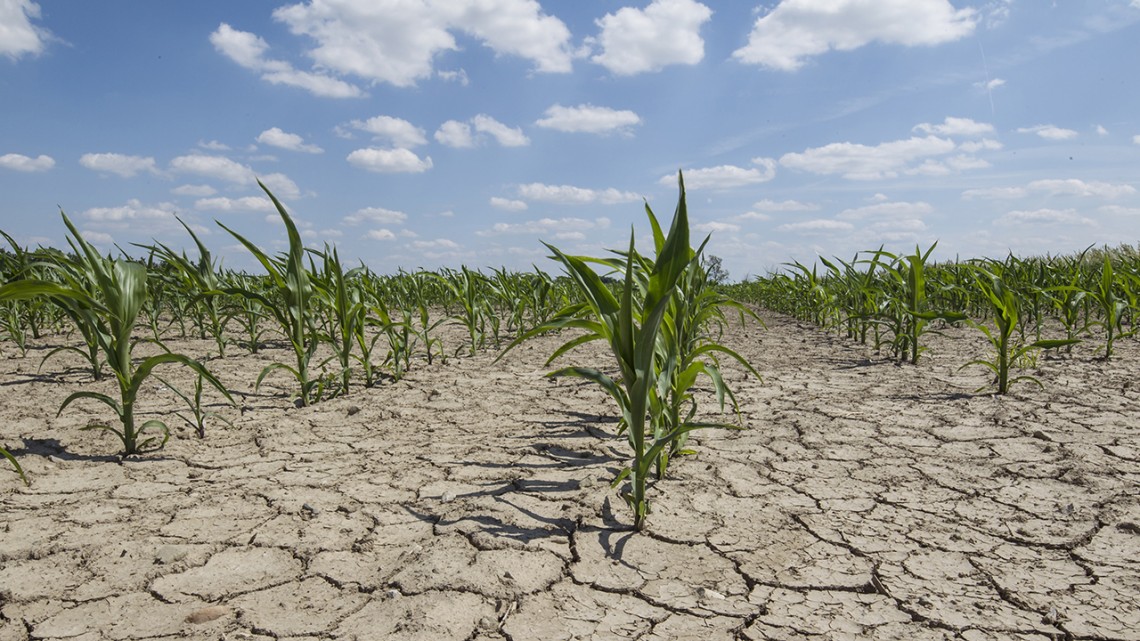
Ault: Future droughts may ‘eclipse’ those of the past
By Blaine Friedlander
Carbon dioxide and other greenhouse gases continue to raise the world’s atmospheric temperatures, warm the influential Pacific Ocean – an ignition point to drought – and generally disrupt oceanic hydrology.
Given those factors, the forecast for drought around the world looks grim.
“Droughts of the future may eclipse those of past centuries in their duration, severity and frequency,” said Toby Ault, associate professor of earth and atmospheric science, in a paper, “On the Essentials of Drought in a Changing Climate,” published April 17 in Science.
Ault was invited to submit the work as part of a special drought issue in advance of the 50th anniversary of Earth Day, April 22.
“Although aggressively cutting greenhouse gas emissions reduces these risks,” Ault said, “even low levels of warming could amplify drought hazards across much of the world.”
In the paper, Ault focuses on defining drought and discussing the newest tools for modeling soil moisture and examining the drought dynamics in warming oceans.
In the United States since 1980, drought has caused an estimated $250 billion in damage and killed approximately 3,000 people, according to Ault. Over the past 12 centuries, megadroughts lasting many decades have caused the demise of complex societies – including the Mayan empires and China’s Yuan Dynasty.
Recently, the Caribbean suffered drought between 2013 and 2016, bringing many water issues to light.
“Islands in the Caribbean don’t have a lot of fresh water anyway,” Ault said. “You have agricultural and municipal water needs. You have tourism – you need to keep the resorts open. You need to flush away pollution from the waste systems. If you get a drought, you are over-constrained. It’s not like you can move water from the mountains to Los Angeles. You’re on an island.”
Atmospheric circulation, Ault said, brings moisture from the world’s oceans to its continents.
“Some of that moisture becomes trapped in glaciers, aquifers and lakes,” he said. “The rest flows through soils, plants and rivers. Drought occurs from aberrations to the flow of moisture through these terrestrial systems.”
While the El Niño–Southern Oscillation’s impact on drought and the global climate are well understood, recent research examining the tropical Pacific Ocean, for example, sea surface warming can trigger drought in the Pacific Northwest and the southeastern U.S.
“Drought hazards are coming down the pike whether we like it or not,” Ault said. “Even the most optimistic scenarios for the climate system now say that if we to stop our greenhouse gas emissions, there is still an elevated risk of drought. The United Nations says that if we warm the atmosphere by 1.5 degrees Celsius, or 2 degrees Celsius, things get worse quickly.”
Ault, a fellow at the Cornell Atkinson Center for Sustainability, said his article is a call to action for scientists, researchers and water managers worldwide.
“What about the future? What will we do when it is a lot hotter?” he said. “If you were living in the 2030s, what would you want us to do now? What developments around resilience, adaptation should we be preparing for right now?
“By the middle of the century, many regions are going to be entering into a brave-new-world type of climate,” Ault said, warning that “we don’t have the infrastructure designed or built for it yet. It’s not that far away.”
Media Contact
Get Cornell news delivered right to your inbox.
Subscribe
